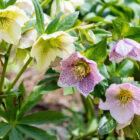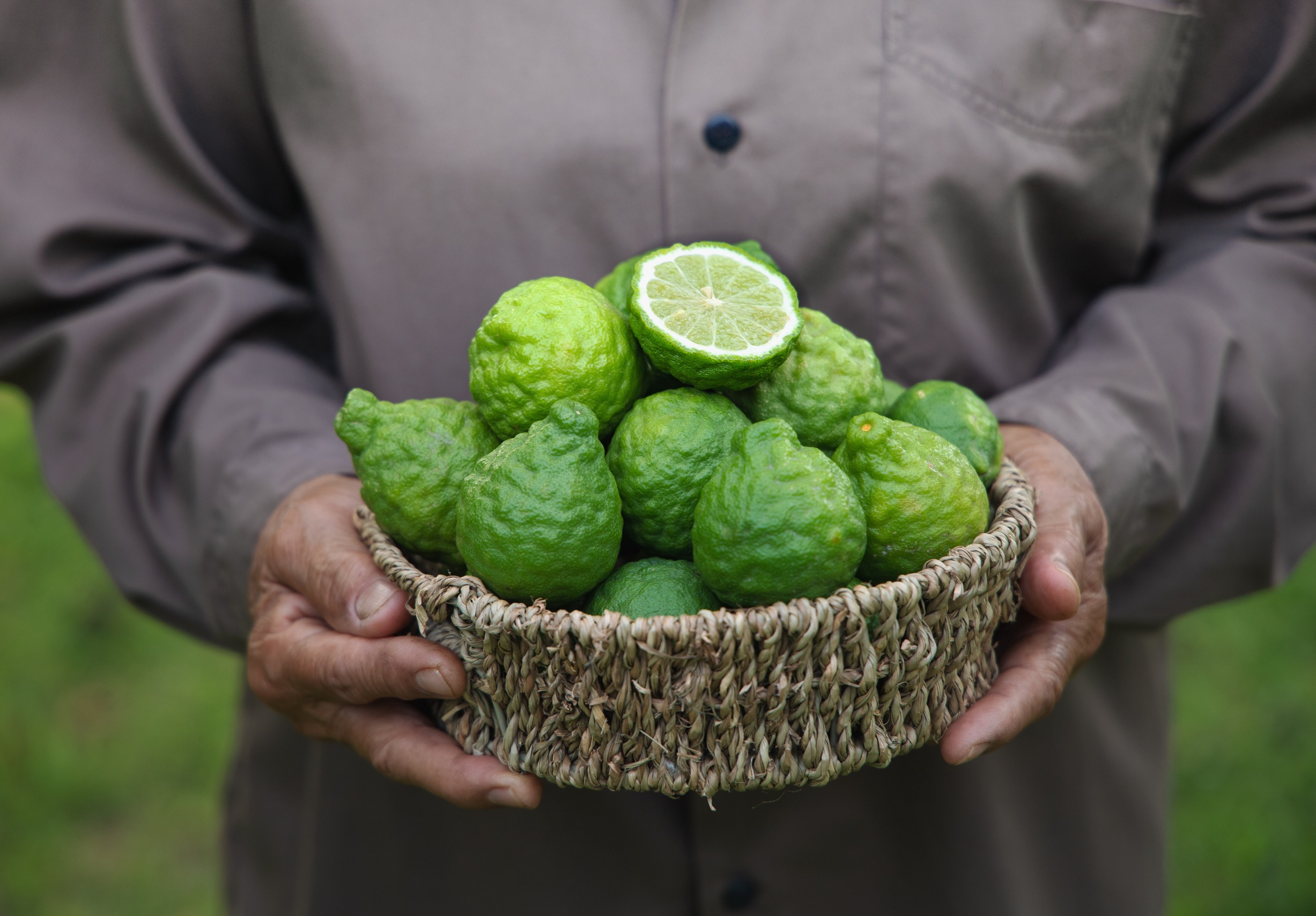
Bergamot, garden cultivation guide
What is bergamot?
 Bergamot orange, or scientifically ‘Citrus Bergamia‘ is a citrus and evergreen plant that can reach a height of about four metres. The leaves of the bergamot are dark green and oval-shaped with slightly denticulate margins. Bergamot flowers are an enchanting addition to any garden, thanks to their beauty and intoxicating scent. In particular, their sweet, citrusy aroma fills the air, creating a relaxing and pleasant atmosphere. These flowers bloom mainly in spring, but in favourable climatic conditions, flowering can continue until early summer. Bergamot flowers are snow-white in colour and their scent attracts bees and other pollinators, contributing to the preservation of biodiversity. Finally, the bergamot fruit is spherical in shape and has a smooth yellow-green skin. Its pale yellow flesh is juicy with a sour taste. This fruit is widely used in cooking and in the production of cosmetics.
Bergamot orange, or scientifically ‘Citrus Bergamia‘ is a citrus and evergreen plant that can reach a height of about four metres. The leaves of the bergamot are dark green and oval-shaped with slightly denticulate margins. Bergamot flowers are an enchanting addition to any garden, thanks to their beauty and intoxicating scent. In particular, their sweet, citrusy aroma fills the air, creating a relaxing and pleasant atmosphere. These flowers bloom mainly in spring, but in favourable climatic conditions, flowering can continue until early summer. Bergamot flowers are snow-white in colour and their scent attracts bees and other pollinators, contributing to the preservation of biodiversity. Finally, the bergamot fruit is spherical in shape and has a smooth yellow-green skin. Its pale yellow flesh is juicy with a sour taste. This fruit is widely used in cooking and in the production of cosmetics.
Where do bergamots come from?
There is some uncertainty as to the exact genesis of this citrus fruit. According to some, it is a natural hybrid, resulting from a cross between a bitter orange and a lemon. This has raised controversy among botanists. According to some, it is nothing more than a subspecies of the bitter orange. Other scholars such as Risso and Poiteau argue that bergamot is a separate species due to its morphological and chemical peculiarities. Uncertainties also exist in relation to its geographical origins.
According to some hypotheses, like many other citrus fruits, bergamot is native to south-east Asia. Other sources, on the other hand, believe that the first bergamot plantations were recorded in Spain and in particular in the Canary Islands. In reality, despite uncertainties about its origins, the bergamot plant has found ideal growing conditions in Italy, and particularly in Calabria. The region, in fact, produces over 90% of the world’s bergamot and is an excellence in the production and use of this citrus fruit.
How to grow the bergamot plant?
In this guide, we will explore the basic steps to successfully grow bergamot, from choosing the ideal location to planting, caring for and pruning, thus ensuring a vigorous plant and generous fruit production. Turn your garden into a fragrant and productive corner, follow Doctor Bioges’ advice.
How and when to plant bergamot?
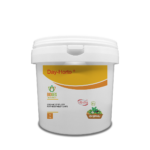 Spring is the ideal time for planting bergamots, especially after frost when the soil starts to warm up. The soil must be well drained and rich in organic substances with a slightly acid pH. Doctor Bioges recommends working it in depth and if necessary enriching it with organic Day-Horto fertiliser. To plant bergamot, a hole of adequate size must be prepared to collect the plant’s root system without being constricted. The plant must then be inserted straight into the hole. The latter should be covered with soil mixed with organic fertiliser. Finally, lightly compress the soil with your foot, and water abundantly to help the roots take root.
Spring is the ideal time for planting bergamots, especially after frost when the soil starts to warm up. The soil must be well drained and rich in organic substances with a slightly acid pH. Doctor Bioges recommends working it in depth and if necessary enriching it with organic Day-Horto fertiliser. To plant bergamot, a hole of adequate size must be prepared to collect the plant’s root system without being constricted. The plant must then be inserted straight into the hole. The latter should be covered with soil mixed with organic fertiliser. Finally, lightly compress the soil with your foot, and water abundantly to help the roots take root.
Where to plant a bergamot?
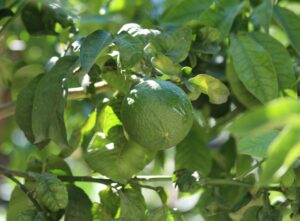 This citrus fruit needs to be placed in a sunny location, where it receives at least 6-8 hours of sun per day. Good exposure to the sun promotes photosynthesis and vigorous plant growth. This citrus plant does not tolerate cold and wind. Such weather conditions can damage the plant and reduce fruit production. It is therefore advisable to plant bergamot in a sheltered area, e.g. near a wall or hedge that can protect it from strong winds. As already mentioned, bergamot thrives in temperate climates with mild winters and hot summers. Therefore, if you live in an area with harsh winters, it is advisable to plant your bergamot in a large pot so that it can be moved to a sheltered spot during the colder months.
This citrus fruit needs to be placed in a sunny location, where it receives at least 6-8 hours of sun per day. Good exposure to the sun promotes photosynthesis and vigorous plant growth. This citrus plant does not tolerate cold and wind. Such weather conditions can damage the plant and reduce fruit production. It is therefore advisable to plant bergamot in a sheltered area, e.g. near a wall or hedge that can protect it from strong winds. As already mentioned, bergamot thrives in temperate climates with mild winters and hot summers. Therefore, if you live in an area with harsh winters, it is advisable to plant your bergamot in a large pot so that it can be moved to a sheltered spot during the colder months.
When should you water bergamot plant?
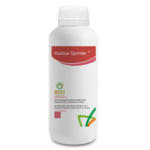 Providing bergamots with a good supply of water is essential to ensure their healthy growth and good fruit production. In particular, it is necessary to irrigate regularly in the early stages of growth in order to encourage the development of a strong and healthy root system, perhaps with the help of the liquid rooting agent Radikal Sprinter. During the active growth period, weekly watering is recommended. However, if temperatures are hot and/or dry, it may be necessary to water more frequently. Furthermore, it is essential to keep the soil constantly moist but not soggy. Waterlogging can cause root rot. Reduce watering during the winter period, and only water if the soil is dry to the touch.
Providing bergamots with a good supply of water is essential to ensure their healthy growth and good fruit production. In particular, it is necessary to irrigate regularly in the early stages of growth in order to encourage the development of a strong and healthy root system, perhaps with the help of the liquid rooting agent Radikal Sprinter. During the active growth period, weekly watering is recommended. However, if temperatures are hot and/or dry, it may be necessary to water more frequently. Furthermore, it is essential to keep the soil constantly moist but not soggy. Waterlogging can cause root rot. Reduce watering during the winter period, and only water if the soil is dry to the touch.
Mulching
Mulching is important for the cultivation of bergamot. This agricultural practice helps to maintain soil moisture, reduce weeds and improve the overall health of the plant. Here are some rules for correctly mulching bergamot. Firstly, it is advisable to use organic material such as straw, dry leaves and grass clippings. These materials decompose slowly, enriching the soil with nutrients and improving its structure. If you do not want to carry out this operation, you should cut the weed that grows around the bergamot plant. However, it is preferable to do this as it helps to keep the soil temperature constant and protects the roots of the bergamot from temperature fluctuations. It also reduces water evaporation, keeping the soil moist for longer and decreasing the need for frequent watering.
Bergamot pruning
It is necessary to prune the bergamot to keep the plant healthy, encourage good fruiting and prevent diseases. It is recommended to prune the bergamot in late spring or in September. Then remove dry or damaged branches, thinning the inside of the foliage to improve air circulation and light penetration. Always use clean and sterile pruning tools. After pruning, Doctor Bioges recommends spraying propolis on wounds as it is a natural disinfectant that promotes tissue healing. It also promotes the production of new shoots and flowers.
How to fertilise bergamot?
 Doctor Bioges recommends fertilising bergamots from the start of vegetative growth until mid-summer in order to support fruit growth and ensure the health of the plant during the warmer months. It is preferable to use Mister Plants Bio liquid organic fertiliser, whose nutrients maximise fruit production and improve soil structure. This organic fertiliser can be administered not only to all fruit plants but also to house plants, aromatic herbs and balcony plants. Dilute the product according to the instructions on the label. Apply it during normal watering to provide nutrients evenly and consistently. Observe the plants regularly and if they show signs of nutritional deficiencies, such as yellow leaves or stunted growth, correct the fertilisation accordingly.
Doctor Bioges recommends fertilising bergamots from the start of vegetative growth until mid-summer in order to support fruit growth and ensure the health of the plant during the warmer months. It is preferable to use Mister Plants Bio liquid organic fertiliser, whose nutrients maximise fruit production and improve soil structure. This organic fertiliser can be administered not only to all fruit plants but also to house plants, aromatic herbs and balcony plants. Dilute the product according to the instructions on the label. Apply it during normal watering to provide nutrients evenly and consistently. Observe the plants regularly and if they show signs of nutritional deficiencies, such as yellow leaves or stunted growth, correct the fertilisation accordingly.
How to care for a bergamot plant?
It is necessary to give preventive care and attention to the bergamot plant in order to keep it healthy and productive. Doctor Bioges, therefore, recommends regularly inspecting the plant for signs of disease or infestation at an early stage. Early diagnosis of the disease, in fact, facilitates treatment and counteracts the spread. Pruning is even essential to improve air circulation and reduce humidity. The latter in particular favours the development of fungi. Infected leaves and branches should also be removed and destroyed regularly. Finally, Doctor Bioges recommends regular preventive treatments with organic products, using resistance-inducing products as an alternative to classic plant protection and insecticide, especially during the active growing season. By adopting these good care practices, you will keep your bergamot healthy and productive. This will reduce the impact of diseases and pests and ensure an abundant harvest of high quality fruit.
Pests and diseases
If appropriate precautions and preventive care are not taken, it is easy for the plant to be attacked by fungal diseases. These include root rot, caused by an excess of moisture in the soil; sooty mould, which manifests itself as a black patina on the leaves and fruit, often associated with the presence of aphids or mealybugs that produce honeydew; leaf spotting, which appears as brownish-red or blackish spots on the leaves. In addition, bergamot plants can also be attacked by pests such as aphids, mealybugs, the red spider mite and the citrus leafminer.
At what point is bergamot ripe?
The bergamot plant starts to be productive from the third year after planting, and continues to be productive for about 25 years. Bergamot is ripe when the skin turns from green to bright yellow and releases an intense, aromatic scent. In fact, some varieties of bergamot may retain a slight green tinge even when ripe. Furthermore, for the fruit to be considered ripe, it must have a skin that is slightly yielding to the touch but not too soft and must have a diameter of about 7-10 cm and a slightly oval or round shape. The bergamot fruit generally reaches full ripeness between November and March. This period can vary depending on the climatic and growing conditions of the place where the plants are grown.
Harvest and postharvest
Use sharp shears for harvesting and handle the fruit carefully to avoid bruising the skin. As a matter of fact, this can reduce the quality and shelf-life of the bergamot. After harvesting, the bergamot fruits should be stored in a cool, dry place.
What healing properties does bergamot have?
 Incorporating the bergamot fruit into our diet can offer numerous health benefits. It helps to improve general well-being and prevent various diseases. This fruit is an excellent source of antioxidants that fight free radicals in the body, reducing oxidative stress and preventing cell damage that can lead to chronic diseases such as cancer and cardiovascular disease. Drinking bergamot juice can help reduce LDL cholesterol levels and increase HDL cholesterol levels. It also helps lower blood triglycerides, improving heart health.
Incorporating the bergamot fruit into our diet can offer numerous health benefits. It helps to improve general well-being and prevent various diseases. This fruit is an excellent source of antioxidants that fight free radicals in the body, reducing oxidative stress and preventing cell damage that can lead to chronic diseases such as cancer and cardiovascular disease. Drinking bergamot juice can help reduce LDL cholesterol levels and increase HDL cholesterol levels. It also helps lower blood triglycerides, improving heart health.
Properties of bergamot
Thanks to its anti-inflammatory properties, bergamot is particularly useful for people suffering from arthritis. This fruit is rich in vitamin C and therefore strengthens the immune system. Finally, it has antibacterial and antifungal properties that are useful in fighting skin infections, reducing acne and improving skin health.
How do you eat the bergamot fruit?
Bergamot is a citrus fruit for use in the kitchen in various ways. In particular, it is possible to prepare bergamot juice, a very aromatic drink that is recommended to be used as a base for other drinks. In particular, it can be used for the preparation of refreshing drinks and cocktails to give a unique citrus touch. This juice can also be used to marinate meat and fish. Mix bergamot juice with olive oil, garlic, herbs and spices to create a delicious marinade sauce. In addition, bergamot peel is excellent for flavouring creams, biscuits and cakes. Very tasty is the bergamot marmalade that can be used to fill cakes and tarts. This jam is characterised by its intense and slightly bitter flavour, which balances well with the sugar.
How to use bergamot oil?
You can use bergamot oil not only in cooking to flavour dishes and drinks, but also for body and spirit care. It is, in fact, characterised by important therapeutic properties. Indeed, this oil can be used in aromatherapy to relieve stress and anxiety, as well as to improve mood and reduce symptoms of depression. Due to its antibacterial and anti-inflammatory properties, bergamot essential oil can be used to treat acne, and to improve the appearance of scars and blemishes. Ideal for relieving muscle cramps.
In conclusion…
Bergamot is a citrus plant with extraordinary aromatic and therapeutic properties. Its fruit rich in antioxidants and vitamins can improve cardiovascular health and strengthen the immune system. Essential oil can be extracted from the peel, which offers benefits for the skin and mental well-being. So, bergamot is a citrus fruit with a thousand resources. It is essential to choose the right growing location, but also to ensure adequate irrigation and protect the plant from pests and diseases. These, in fact, are fundamental steps to obtain high quality fruit. So too, regular pruning and the use of mulch can improve the health and productivity of the plant. Whether for use in cooking or cosmetics, bergamot is a versatile plant that deserves a place of honour in every garden.
If you have questions or need further information, the Bioges team is always ready to assist you. You can contact us on social network or by sending an e-mail to info@bioges.com.
Stay up to date with our latest news about gardening!

